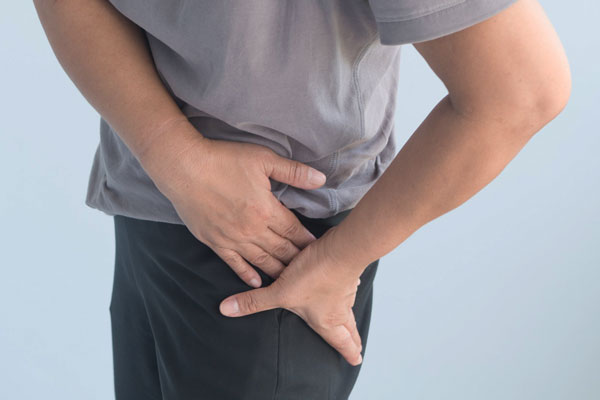Hip Bursitis
The hip is the largest joint in our body and performs a wide range of motion. The muscles, bones, and tendons within the hip all work together to keep us moving. But when there is an injury or overuse of the joint, it may put pressure on the bursae, resulting in bursitis.
What is hip bursitis?
Hip bursitis is an irritation or inflammation of the bursa. A bursa is a fluid-filled sac that functions as a cushioning surface to reduce the friction between the tissues during movement. The hip is associated with two major bursae, namely the trochanteric bursa (on the outer side of the hip) and the ischial bursa (on the upper buttock area), which may become inflamed and irritated.

What are the symptoms of hip bursitis?
The following are the common symptoms of hip bursitis:
- Pain on the outer hip region and thigh or upper buttock based on the type of hip bursitis.
- Pain when lying on the affected side.
- Worsening of pain with activities, such as walking, getting out of a car, getting up from a deep chair, or sitting on hard surfaces.
- Pain while climbing the stairs.
- Pain when the side of the hip is pressed.
What are the causes and risk factors of hip bursitis?
Hip bursitis may occur due to any of the following reasons:
- Activities involving repetitive movements that put pressure on the bursae, such as running, climbing stairs, and standing for long periods.
- Incorrect posture due to certain conditions, such as arthritis of the lower spine, scoliosis, etc.
- Injury to the point of the hip due to a heavy fall, bumping the hip onto an object, etc.
- Stress on the soft tissues due to poorly positioned joint or bone.
- Medical conditions, such as gout, rheumatoid arthritis, psoriasis, thyroid problems, and rarely certain infections.
- Deposition of calcium in the tendons that attach to the trochanter.
- Previous surgery or presence of prosthetic implants in the hip.
Females are at a higher risk of developing hip bursitis compared to males. Hip bursitis is especially common in middle-aged and elder people.
How is hip bursitis diagnosed?
The diagnosis of hip bursitis involves reviewing the medical history and performing a physical examination. A physical examination is done to check the exact location of hip pain and areas of tenderness outside the hip or above the buttocks. The doctor may also ask about situations when the pain is becoming severe. To confirm the condition, local anesthesia is administered at the suspected area to check if the pain is reducing.
An x-ray may be ordered to rule out conditions such as arthritis. Sometimes X-rays might show areas of calcium deposits that may indicate inflammation of the bursa. Additionally, other imaging tests, such as an MRI or an ultrasound, might also be done.
What are the treatment options?
The major goal of the treatment is to lessen inflammation and pain. This can be done by resting the joint as much as possible. Additionally, self-care and home remedies, such as the application of heat or cold packs, may also provide relief.
The treatment options for hip bursitis may include the following:
- Non-steroidal anti-inflammatory drugs (NSAIDs), such as naproxen, or ibuprofen to reduce pain and inflammation.
- Corticosteroids, such as cortisone injections in case of severe pain and inflammation.
- Physical therapy includes a set of exercises to improve the strength and mobility.
- Surgery may be recommended when the above methods are not effective in relieving the symptoms.
Outlook / prevention
Usually, the symptoms of hip bursitis resolve in a week with anti-inflammatory medicines. Recovery can be hastened with physical therapy.
Hip bursitis can be prevented either by avoiding or modifying the activities that cause the problem. Follow the below-given precautions while performing activities:
- Stop the activity in case of pain.
- Start slowly while gradually increasing the activity level.
- Use limited force and avoid repetitions.
Other measures to prevent hip bursitis are:
- Avoid activities that causes stress on the hips.
- Lose weight if necessary.
- Maintain the strength and flexibility of hip muscles by performing certain stretching exercises.
- Use canes or crutches while walking for a few days.
- Use properly fitting shoe insert to correct the leg length differences.
